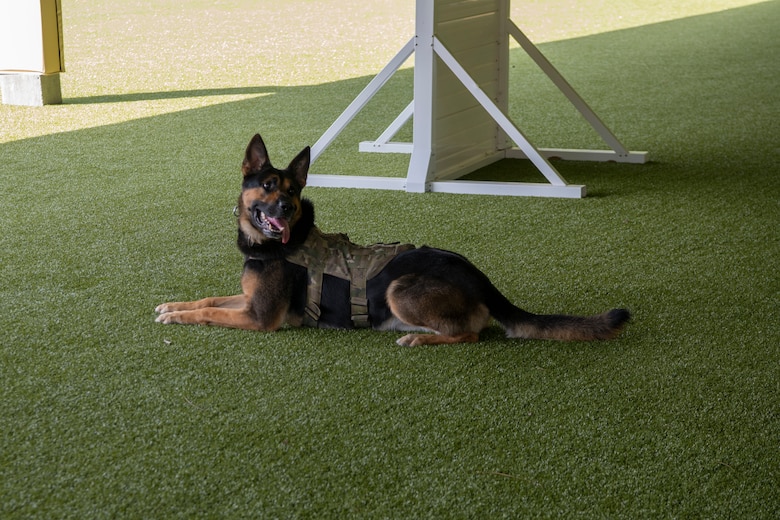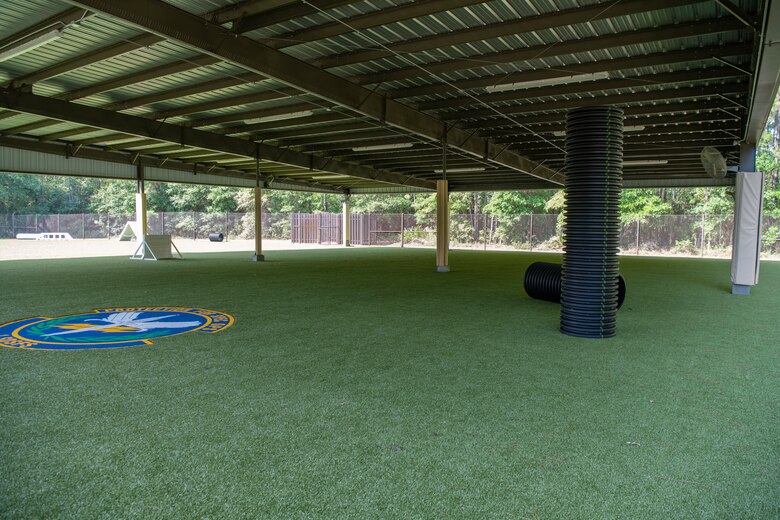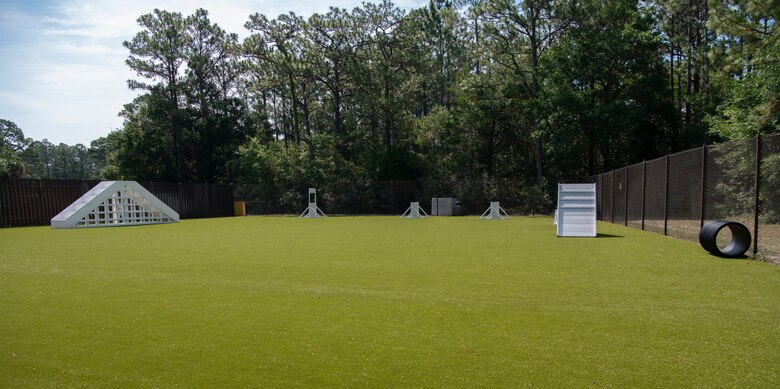Recent renovations to kennel facilities at the 1st Special Operations Security Forces Squadron are enhancing the living conditions and wellbeing of military working dogs at Hurlburt Field, Florida.
The upgrades are a result of Kennel Health Assessment 2.0, Air Force Security Forces Center's web-based evaluation system that tracks and evaluates the condition of military working dog kennel facilities across the Air Force. AFSFC, a primary subordinate unit of the Air Force Installation and Mission Support Center, launched the program in July 2020 with the goal of improving the health and welfare of military working dogs by modernizing existing facilities that house MWDs throughout their military enlistment.
"KHA 2.0 software analyzes four major areas: administrative offices, kennel facilities, support areas and veterinary support," said Tech. Sgt. Otho Nugent, Air Force MWD program manager and special projects lead at AFSFC.
Taking into account more than 40 other criteria, "... the results are used to categorize, prioritize and advocate for facility renovations and enhancements to the more than $116 million in Air Force military working dog assets," Nugent said.
The data is shared with senior leaders and key decision makers who then make informed decisions on funding initiatives and projects related to MWD health and readiness.
The $650,000 renovation at Hurlburt Field, which included an overhang and the installation of canine turf, had an immediate positive impact on readiness.
"These alone led to much needed improvements that provide a safer environment for the working dogs and directly enhance our training program," said Staff Sgt. Matthew Mascolo, MWD trainer and interim kennel master at the 1st SOSFS. "The overhang shelters the working dogs from the Florida heat, and the K9Grass that was installed on the training yard helps protect them from danger.
"The training course was bare dirt before the turf was installed," Mascolo said. "The area attracted animals and insects that would find their way to the kennels. That posed a threat to the health and welfare of our working dogs.
"Max, one of the MWDs, was bitten by a brown recluse in June of 2019," he said. "I found him but by that time his leg was swollen. We took him to the veterinary clinic at Fort Benning (Georgia), but the vet gave him little chance of surviving. Thankfully, Max recovered after a few months and was able to continue working as a vital member of the 1st Special Operations Security Forces unit."
"Hurlburt Field is one example of how KHA 2.0 is at the heart of readiness," Nugent said. "We see military working dogs as sensitive, low density-high demand, valuable assets that require training, love and attention to operate at optimum levels. Their ability to perform what they have been tasked and trained to do is at the heart of readiness. It's our job to deliver what's needed for our canines and skilled handlers to perform at this extraordinary level."

Nelson, a military working dog with the 1st Special Operations Security Forces Squadron, relaxes on the new turf at the military working dog kennel facility, Hurlburt Field, Fla., June 17, 2021. The upgrades are a result of Kennel Health Assessment 2.0, Air Force Security Forces Center's web-based evaluation system that tracks and evaluates the condition of military working dog kennel facilities across the Air Force. (U.S. Air Force photo by Airman 1st Class Amanda A. Flower-Raschella)

A new overhang keeps the canine turf cool at Hurlburt Field Fla.'s military working dog kennel facility. Prior to the recent renovations, the working dogs were at risk of burning their paws with increasing outdoor temperatures. The upgrades are a result of Kennel Health Assessment (KHA) 2.0, Air Force Security Forces Center's web-based evaluation system that tracks and evaluates the condition of military working dog kennel facilities across the Air Force. (U.S. Air Force photo by Airman 1st Class Amanda A. Flower-Raschella)

The newly-renovated canine training course in Hurlburt Field, Florida, is used by handlers to train military working dogs at the 1st Special Operations Security Forces Squadron Kennel Facility. The upgrades are a result of Kennel Health Assessment (KHA) 2.0, Air Force Security Forces Center's web-based evaluation system that tracks and evaluates the condition of military working dog kennel facilities across the Air Force. (U.S. Air Force photo by Airman 1st Class Amanda A. Flower-Raschella)






